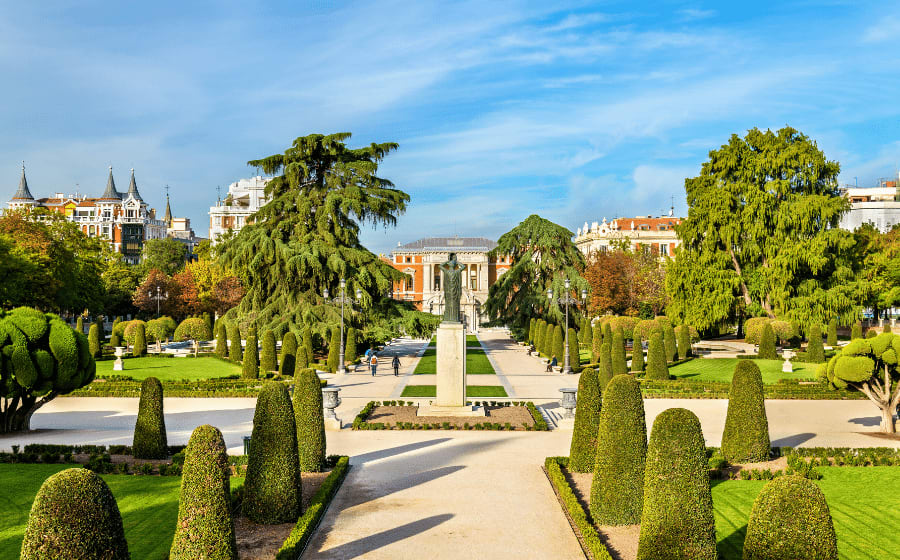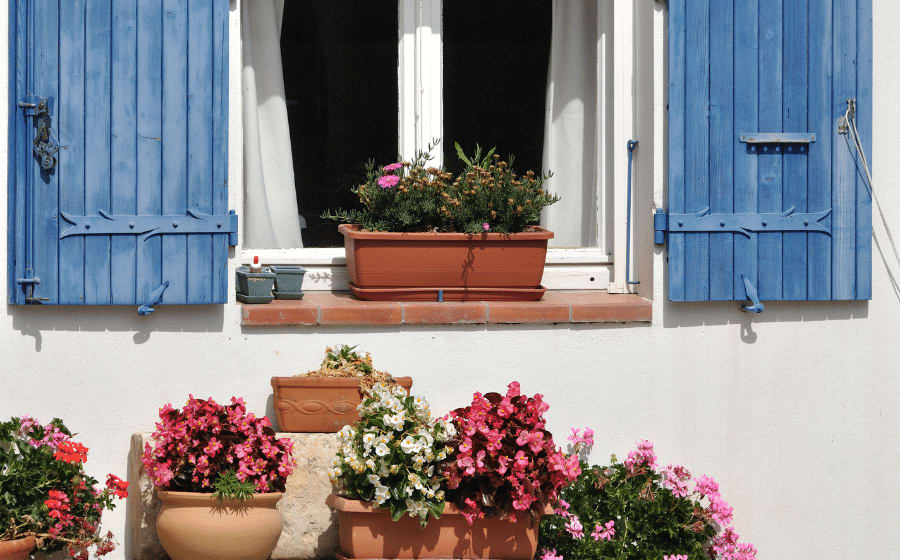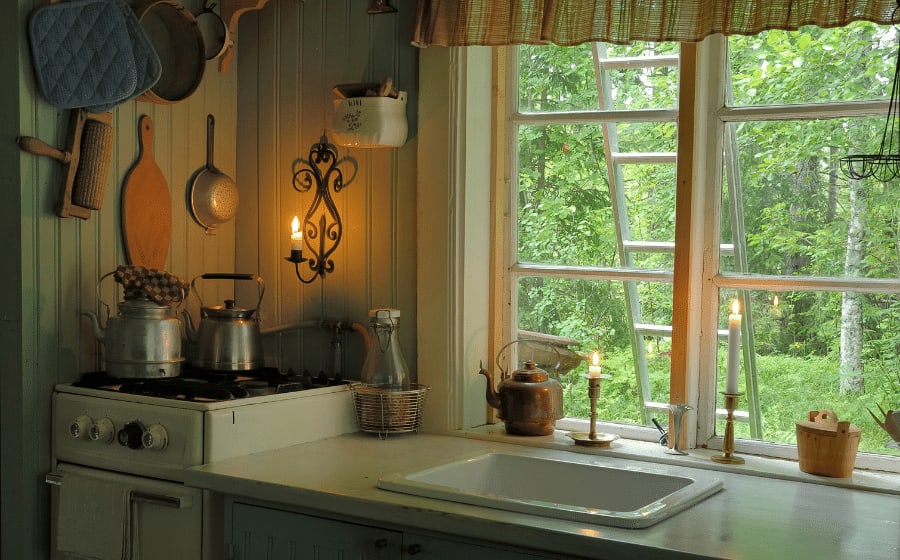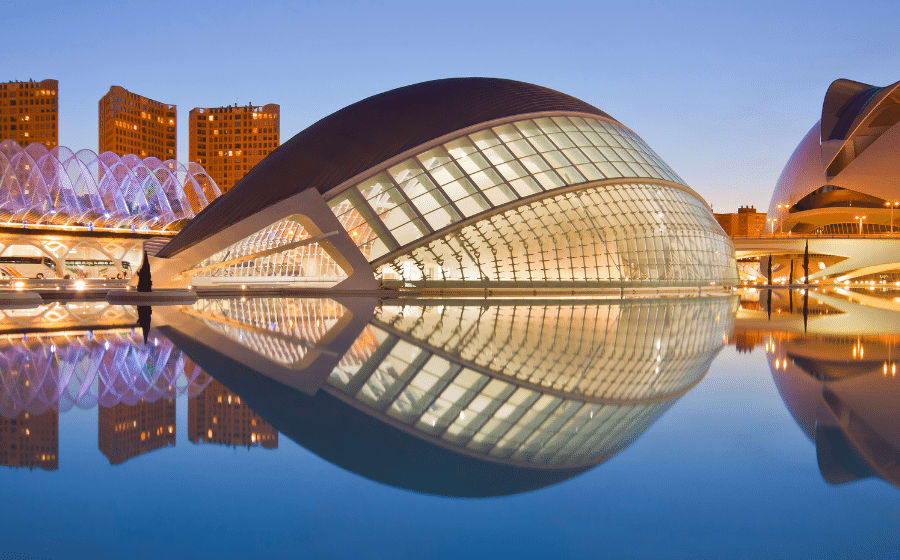The Spanish Architecture and the 21 Wonderful Mediterranean Buildings
November 25, 2022
Win a FREE Trip to Spain!
Exciting Announcement! For the first time, we're thrilled to offer exclusive trips to the heart of Spain - an experience like no other. This isn't your typical tourist journey; it's a unique opportunity to immerse yourself in authentic Spanish culture, alongside real locals and our passionate team.
But there's more! Simply by requesting information about this amazing trip, you'll be entered into a special draw to win a Fully Paid Trip to Spain for Two. And that's not all - everyone who inquires will receive an exclusive bonus gift, valued at $500, available only now.
Ready to Discover the Real Spain?Click Here ↑ to Request Information & Enter the Draw!
This beautiful monument you’re seeing right now is called the Alhambra of Granada, a World Heritage Site for representing a unique artistic achievement of humanity, illustrating the Islamic presence in Spain. This building, along with others, is one of the main architectural structures in Spain.
And the best part is that we have millions of examples like this scattered throughout the country!! You’ll only have to walk through the streets to see them since Art speaks for itself.
But, the exciting thing is to know how the incredible mix of cultures and artistic currents from different parts of the world merged to form what we know today as “Spanish architecture.” and this is exactly what I’m going to show you in this article. Architectural styles in Spain over time, the most important monuments historically, the most important representatives, and, of course, some tips for you to include these places in your next trip!
This tour of Spain will leave you impressed by the majestic fusions that have touched the hearts of everyone who visits us.
Table of Contents ▼ ▶
Pre-history Architecture
I said we’ll learn everything about Architecture here, right? to become experts, we need to go back in time and analyze Pre-Roman and Roman architecture. We first must understand the manifestations of Hispanic architecture that begin with the two cultures that make up our protohistory. On one side, the Celtic settled in Asturias, a province in the region of Galicia, along with the two Castillas.
On the other side, the Iberians occupied the southern area and progressed thanks to the Phoenician and Greek colonizers.
The main thing to highlight about Celtic constructions was the Castros (settlements on the tops of the mountains), located in the areas occupied by the Celts in the Duero valley or in Galicia.
In case you’re wondering, these are related articles about the Duero river and the regions in Northern Spain for a better understanding:
Duoro River: The 8 Facts and 3 Activities Before You Visit!
Cities in Northern Spain: 12 locations and best spots to visit
Then we have the first hints of Roman architecture, which gives rise to vaulted and dynamic architecture, and yes, important vestiges of its architecture remain. For example, the walls of León, Lugo, Tarragona, Carmona, and Córdoba are generally built with large ashlars and are authentic pieces from this period.
Then, on the other side, we have the Iberian architecture, which gave rise to fortified towns from the 4th century B.C. It had characteristic walls similar to those of the ancient Ituci. There was also a significant urban development, such as Numancia and others more primitive, excavated in the rock, such as Termancia.
Well… This was just the beginning of Spanish architecture. In this article, you will be able to walk through the history of many years of hustle and perseverance. You are going to learn fascinating things, and if you want to get some background info about Spain’s roots, I suggest you read the following post:
Iberia: The Rich Past and Present of our Unique Peninsula
What are Spaniards? & the big difference with the Spanish
Spanish Ethnicity is NOT the same everywhere! I’ll tell you why
Pre-Romanesque Architecture
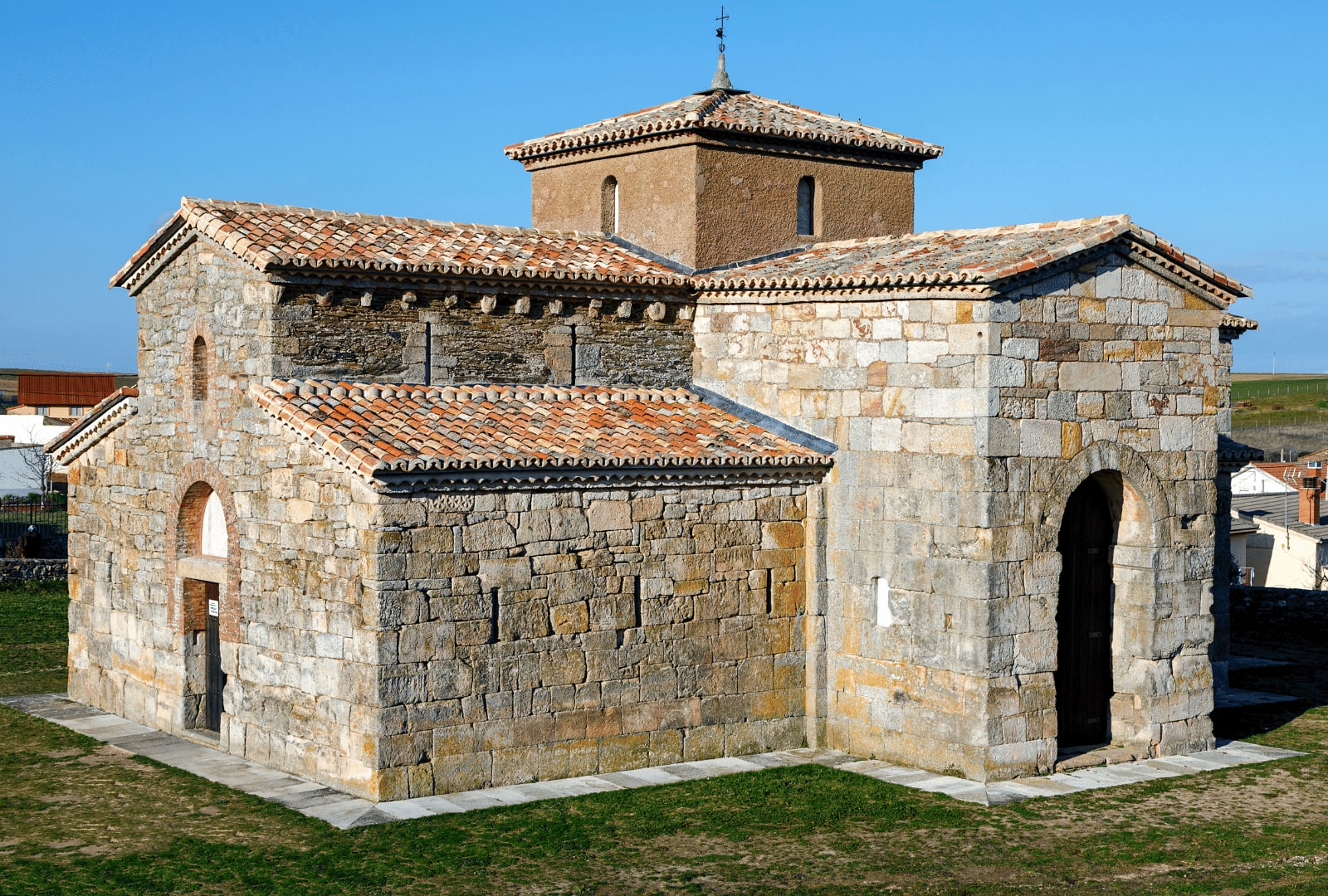
Pre-Romanesque Architecture can be divided into 3 different periods:
- The Visigoth architecture: Visigoth people appeared in Spain in the 5th century, but they weren’t fully manifested until the 7th century when new construction models appeared. The characteristics of Visigoth architecture were: horseshoe arch with cant (preferably supported by columns), the decoration with strips running along the walls, where plants or animal motifs were also very significant.
- Asturian architecture: The Islamic invasion of the Iberian Peninsula in 711 didn’t involve resistance from the Christian population. It was only when Alfonso III the Great that Mozarabic elements appeared. Arab influence and a side porch that anticipates Romanesque Art began to be observed, and the central creation of this period was the Church of Santa María del Naranco in Oviedo.
- Mozarabic architecture: Roman and Visigoth elements are used in this type of architecture, and, during the 6th century, interesting paleochristian churches appeared that preclude the Visigoth creations, like the Church of Santa María de Quintanilla de las Viñas in Burgos.
The word “Mozarabic” designates the Christian population that adapted to the Islamic way of living during the Muslim occupation of the Iberian Peninsula.
The decoration was very similar to the Visigoth type. An example of Mozarabic architecture is the Church of San Cebrian de Mazote in Valladolid, characterized by the generalized use of vaults and columns with Corinthian capitals, among other things.
Romanesque Architecture

Everything started when the Christians in the north managed to push the Moors to the south. As a result, they could revive their religion in freedom, even if the buildings were missing. Romanesque architecture in Spain began in the northeast part of the peninsula, then spread to the western region along the famous Camino de Santiago. Some of Spain’s most important examples of Romanesque architecture can be found in Aragon, Castile and Leon, Asturias, and Galicia.
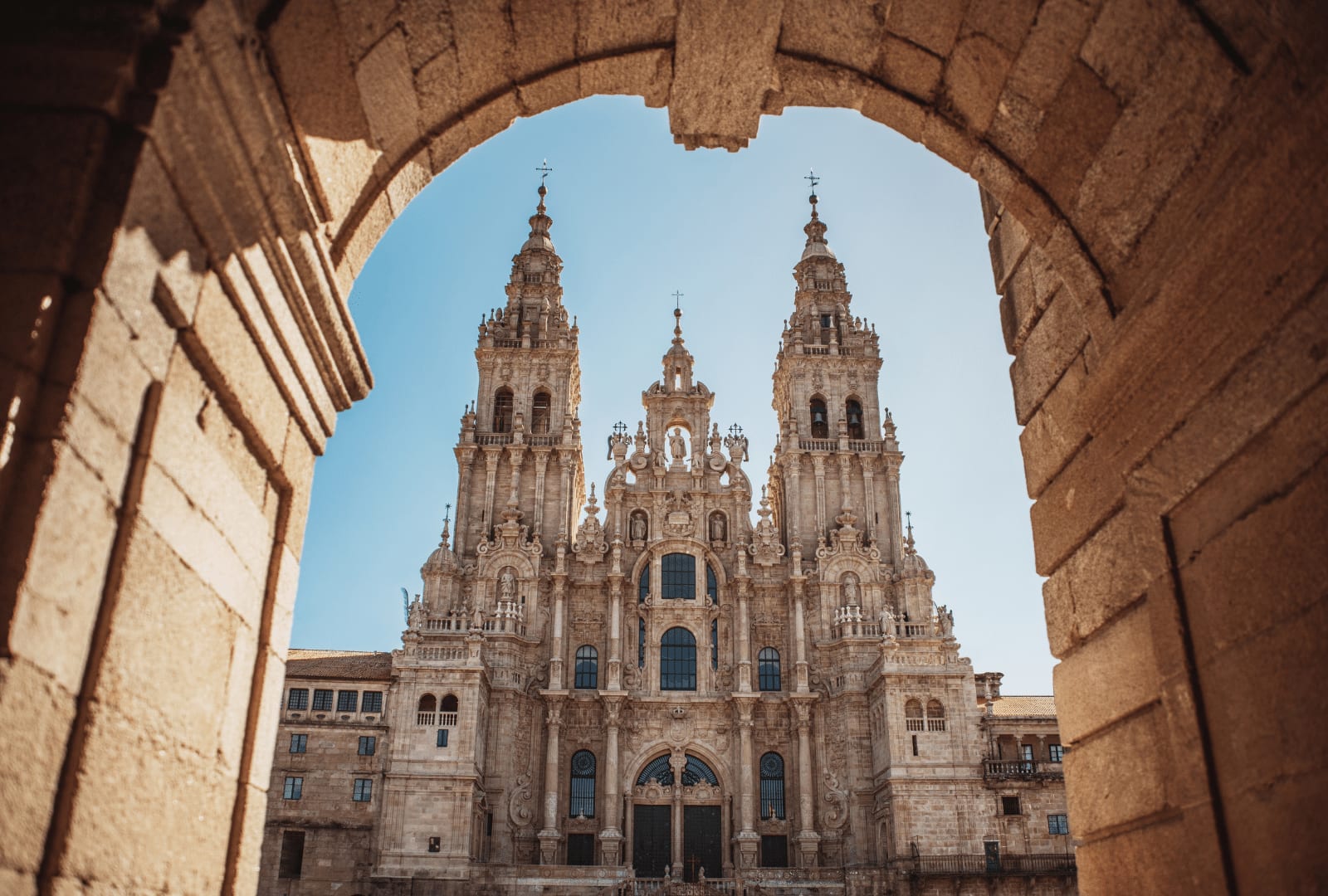
Romanesque architecture expanded significantly during the 10th and 11th centuries in Northern Spain. At first, this zone had a more underdeveloped architectural style.
Floor plans in the form of a Roman cross became prevalent in Early Romanesque churches.
Typical features of Romanesque architecture in Spain are:
- Solid stone walls.
- Perfect arches.
- Barrel vaults.
- The main entrances are decorated.
- Small but predominantly geometric decorations (like checkerboard patterns and zigzags).
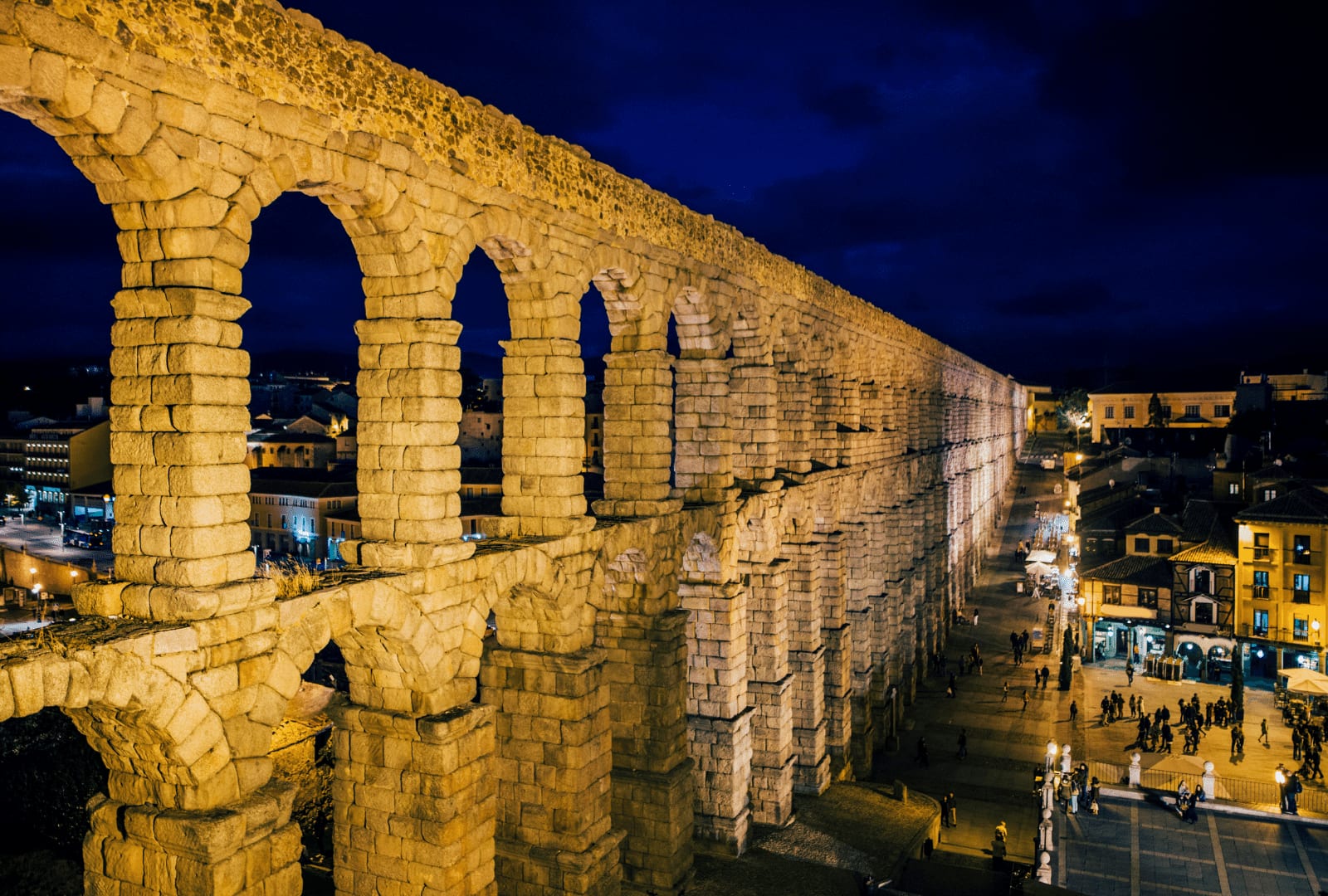
Usually, in Romanesque buildings, doors are very close to the windows, and interior areas of the houses/castles/churches… tend to be dark as there is no natural light.
The Cathedral of Jaca is considered the first example of Romanesque architecture imported from France through the pilgrimage to Santiago.
Gothic Architecture
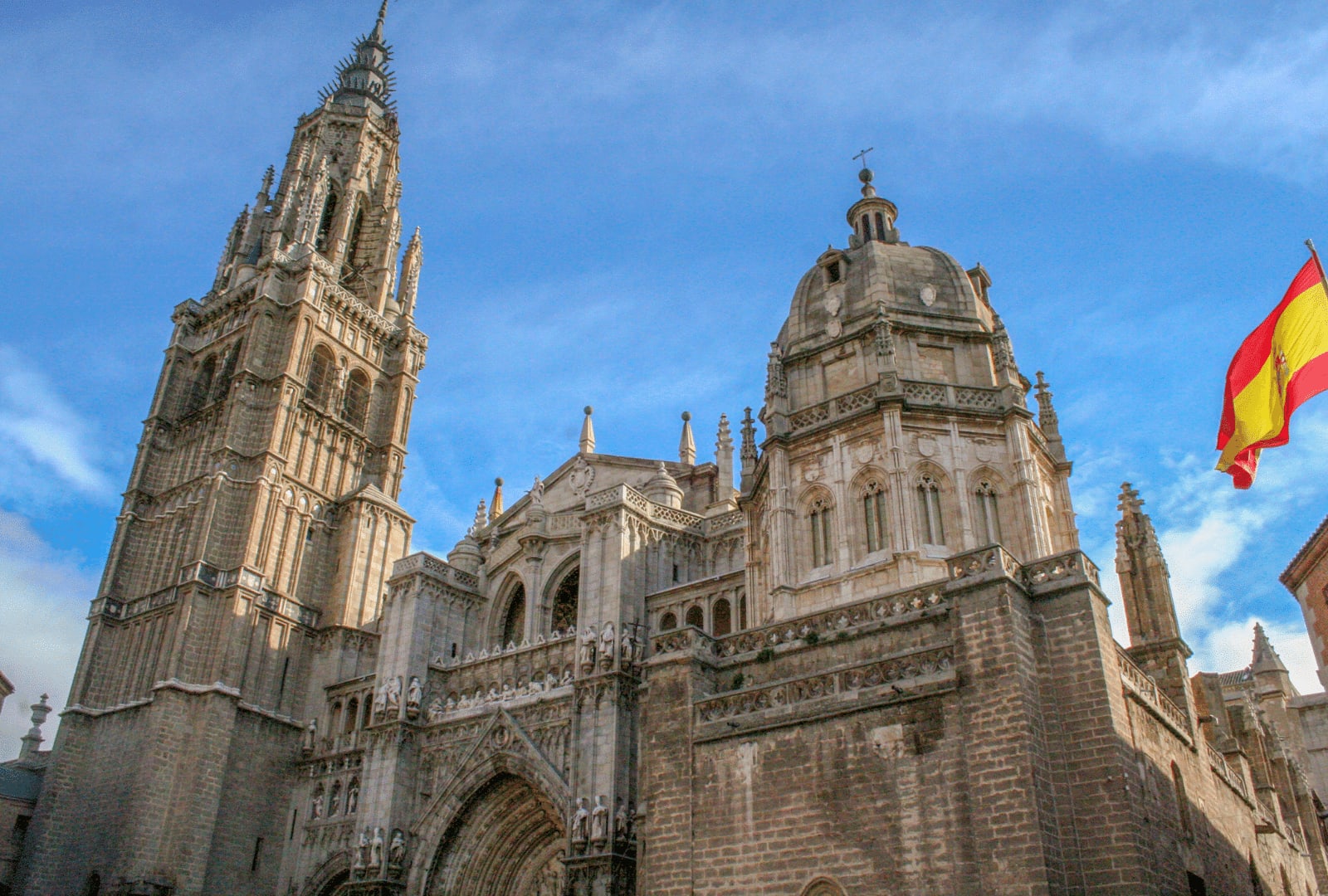
First things first, Why is Gothic architecture called Gothic? It originated with a Renaissance architect named Giorgio Vasari.
Gothic architecture emerged in northern France around the 12th century, and it was introduced by the Jacobean routes in our country to quickly replace the Romanesque Style. The pointed arch marked a before and after in this period since it revolutionized the way of building. This was a massive change because it made it possible to erect less heavy structures much higher and brighter than during the Romanesque period.
Some of the most impressive buildings in the Iberian Peninsula are built in this Style. At the end of the 13th century and during the 14th century, there were different variants of the Gothic Style with varying ways of using architectural and decorative elements.

An excellent example of this Style is the Burgos Cathedral: It has its purest form of Gothic Style, even though, in some parts, the construction contains elements added in later centuries. Another suitable example of this Style is the Cathedral of León. Its construction began in the 13th century by the master Enrique (who also worked on constructing the cathedral of Burgos).
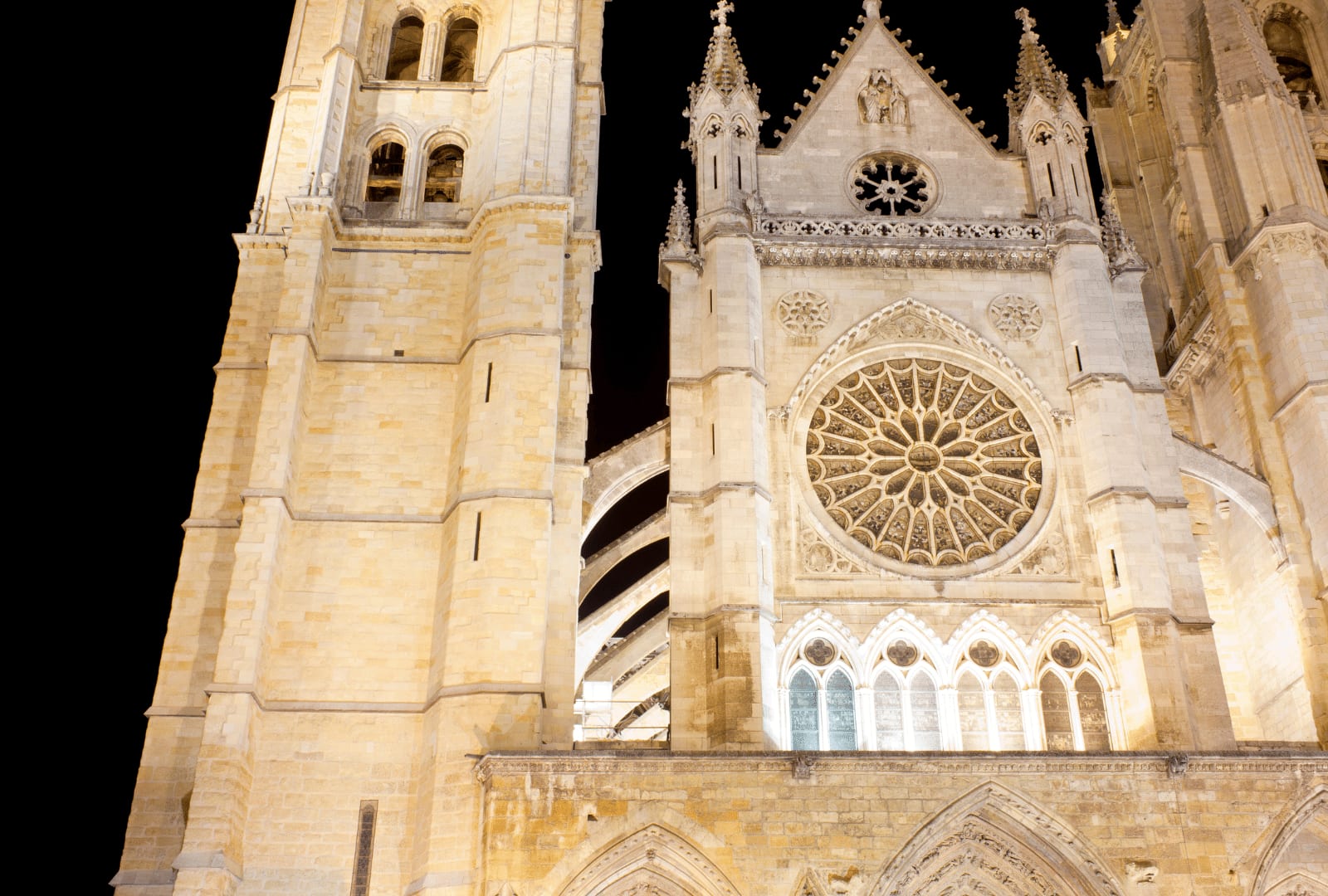
In this temple, the Gothic characteristic is taken to its maximum exponent. I recommend you go inside the cathedral as you will see one of the largest collections of medieval stained glass that exist in the world.
Mudéjar Architecture

Many people need help understanding the concept of Mudéjar architecture. It is the architectural Art that combines Arab and Christian styles (including Gothic, Romanesque, and Renaissance) and is found in regions where both cultures have coexisted for a long time, such as the southern part of Spain. You can visit our related posts for more information!
The Mudéjar Style started in the 12th century and is characterized by combining parts built with brick and others with stone. Also, they used other materials, such as bricks, plasters, ceramics, wood, and different ways of working and ornamentation typical of Hispano-Muslim Art.
In short, Mudéjar Art combines an artistic style unique to the history of Spain. It was a meeting point between Christianity and Islam. Mudejar Art is one of the few artistic styles whose development is unique to the Iberian Peninsula (including Spain and Portugal). The first time this Style was used in Spain was in Leon. One of the cities with more Mudéjar monuments in Spain is Teruel in the region of Aragon. —Although this Style is almost nonexistent in Galicia, in the north of the Cantabrian Coast, or in Catalonia.
A great example of this type of architecture is the Palace of the Aljaferia in Zaragoza. It was remodeled after the reconquest to become another of the jewels of Mudejar Art in Spain.
Hispano-Muslim Architecture
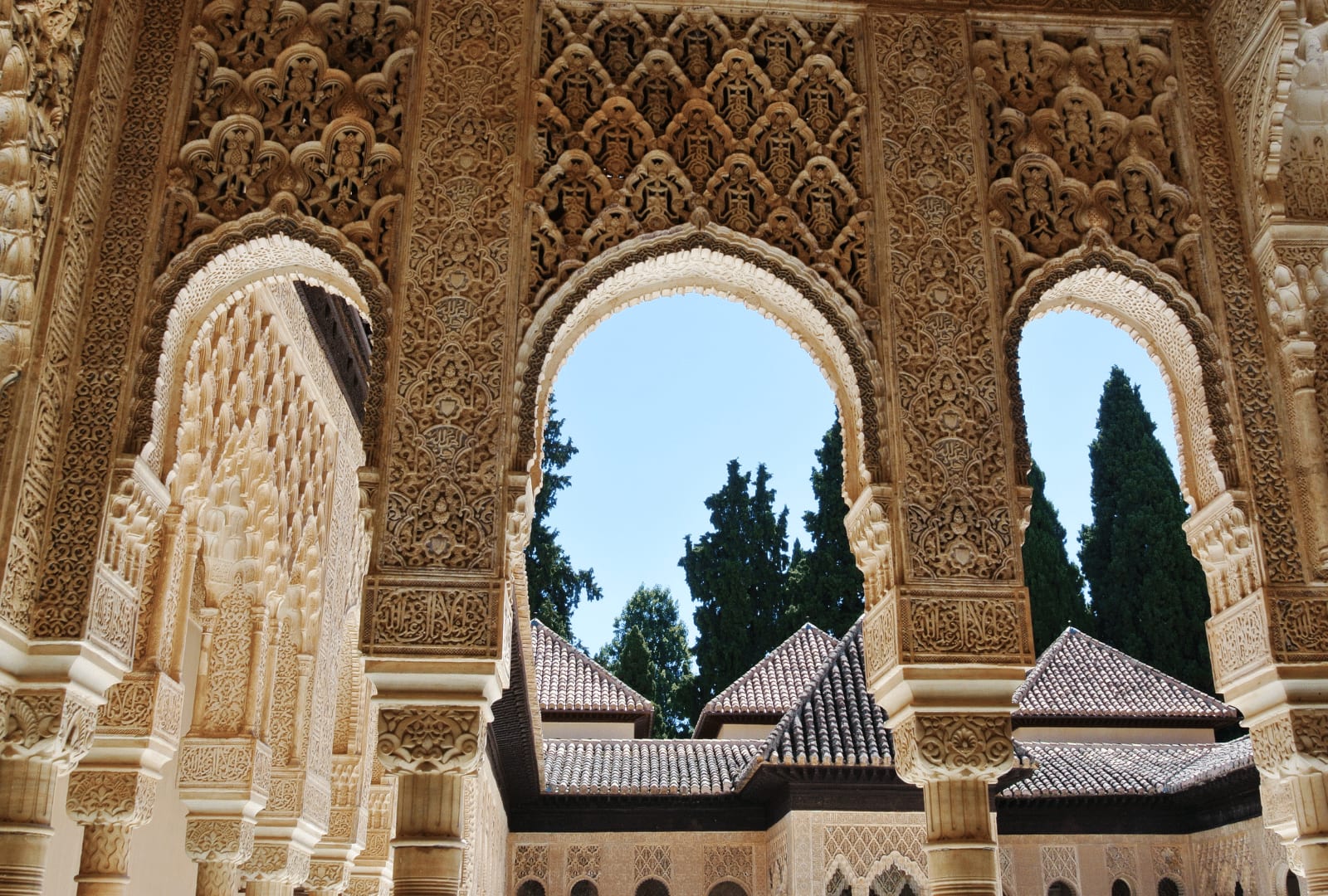
Hispano-Muslim Art is the Islamic Art produced in Muslim Spain from the 8th to 15th centuries. The architecture of this period shines above all other artistic manifestations since the Style mixes classical elements with Islamic elements.
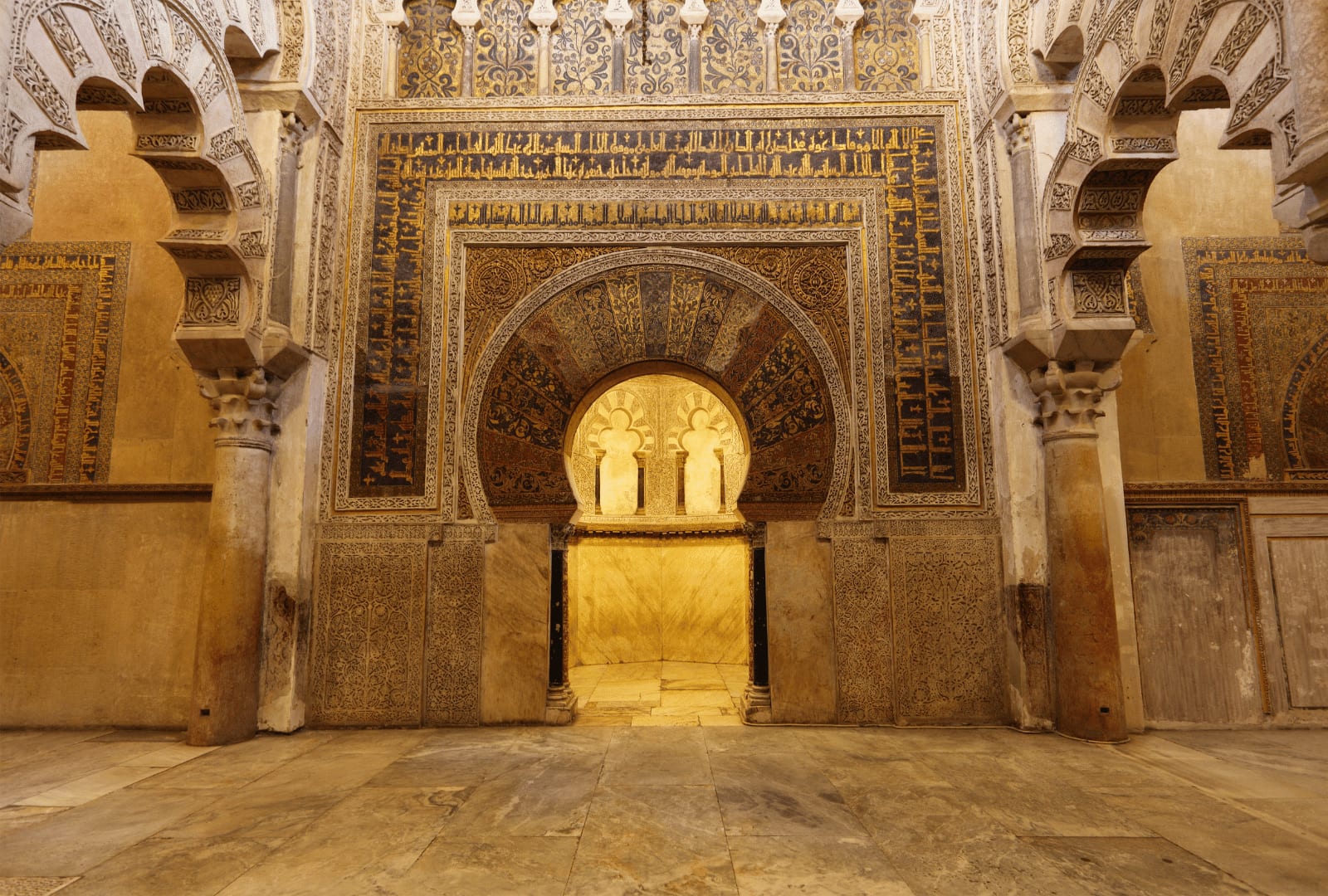
Islamic Art must be interpreted from a religious point of view, typical of a theocentric society such as the Muslim one, where the political and religious power lies in the same person. This type of architecture uses poor materials such as brick or masonry, and there is an excellent contrast between the simple and plain exterior poverty and the richly decorated interior, where the arches and domes often have a decorative meaning.

Some of the essential elements of this decoration are the calligraphy, vegetal and geometric motifs. La Mezquita de Córdoba is the fundamental building of Hispano-Muslim architecture. Still another example is the Giralda of Seville, built by the Almohads in the 12th century, which today serves as the bell tower of the Gothic cathedral built on the same site. I recommend you go to both places as they are beautiful and impressive.
Renaissance Architecture

Continuing with one of the most known Architectural Styles, we have the famous Renaissance architecture. It was born in Italy during the Quattrocento (the artistic period between 1400 and 1499). Now you’re wondering why I’m talking about Italy when we’re talking about Spain. But let me tell you that this Style got massive popularity in Italy and started to become famous in Spain. During this time in Spain, they desired to make perfect buildings from the point of view of “technical perfection” based on mathematical and geometrical calculations, to obtain maximum harmony and proportion.
In order to achieve this, the Style had many characteristics, such as the use of Vaults, Domes, Semicircular Arches, Columns, Pediments, Candilieri, Corinthian style Capital, and many more innovations in that historical moment that later became developed by local architects.

The Renaissance in Spain lived through three phases: The Plateresque, the Purism, and the Herrerian Style.
The first Renaissance building built in Spain was the Palace of Santa Cruz in Valladolid, constructed between 1486 and 1491. Then the Palace of Carlos V, which is probably the Renaissance building in Spain par excellence. Although it is said that Charles V wanted to build it there because he fell in love with the Alhambra when he visited it.
This building was a way to symbolize the triumph of Christianity over Islam. One more example I will tell you today about this type of architecture is the Palace of the Counts of Gomara, considered the most representative building of the Renaissance civil architecture of Soria. And, fun fact: it was declared of Cultural Interest in the year 2000, so I recommend you visit it!
Baroque Architecture

Baroque architecture in Spain began in the first half of the 17th century. The Baroque in our country is an essentially regionalist style and doesn’t follow universal patterns, each region of Spain has a style with its own personality. For example, there are huge differences between the Castilian Baroque from the Andalusian or the Galician.
This first Baroque is closely linked to Juan Herrera and his main monument, El Escorial. The ideals of the Counter-Reformation facilitated the survival of this architectural model. The facades during this period get their highest importance, as they are usually the most decorative elements, with numerous cornices and Greek, Roman, and Solomonic columns. Because of the predominance of decorative elements over constructive ones, it can be said that a Baroque Style is more a form of architectural decoration than a style of architecture.
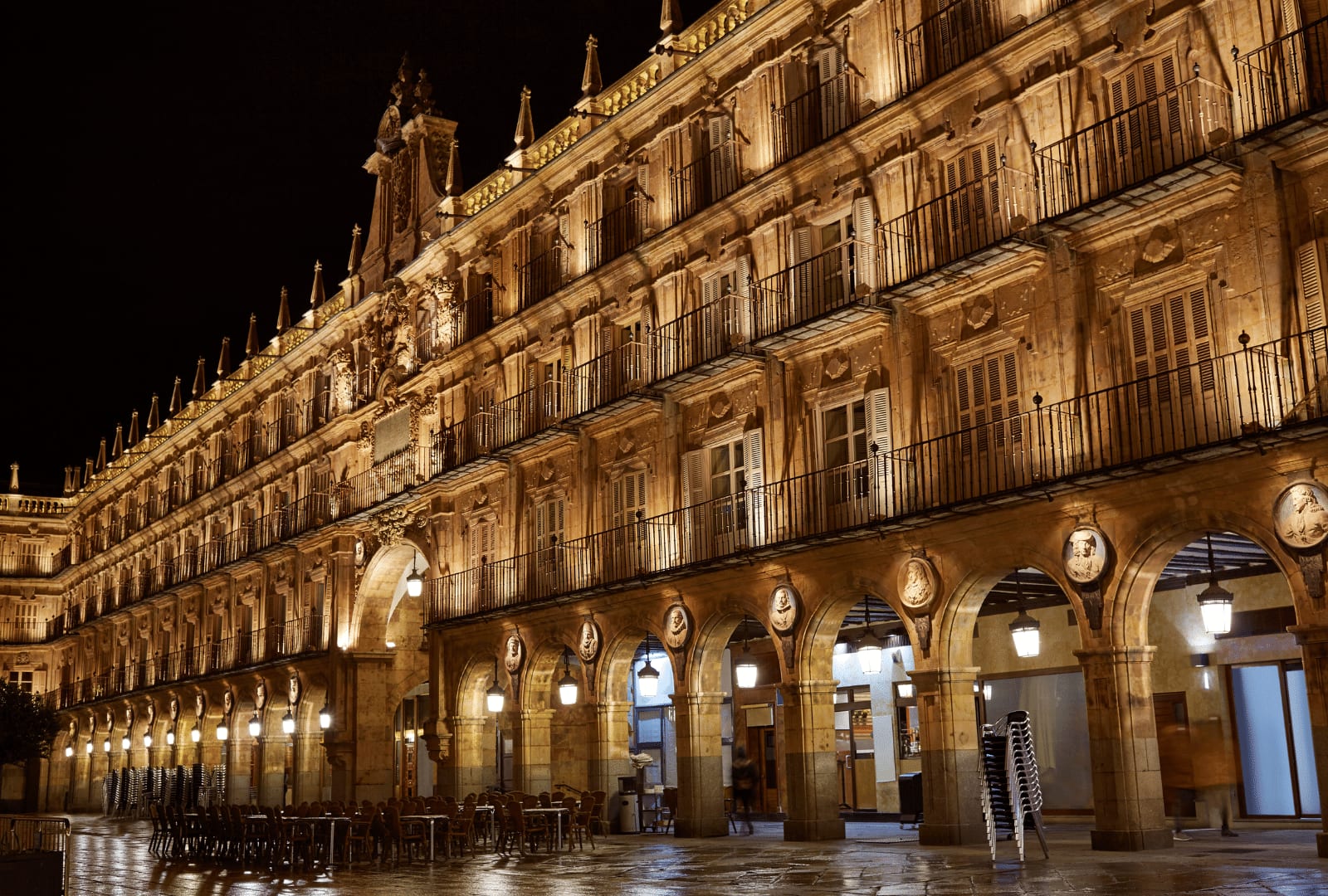
From a cultural point of view, the Spanish Baroque period was shaped by the “Golden Age” in the last decades of the 16th century, continuing until the last third of the 17th century. There was a period of maximum development in the arts and literature during this period. An excellent example of this type of architecture is la Plaza Mayor de Salamanca (1755), built by Alberto Churriguera. The space is delimited by buildings consisting of three floors of balconies on a base with arches. The entire facade is highly ornamented, and the main element is the City Hall building.
Bourbons Architecture
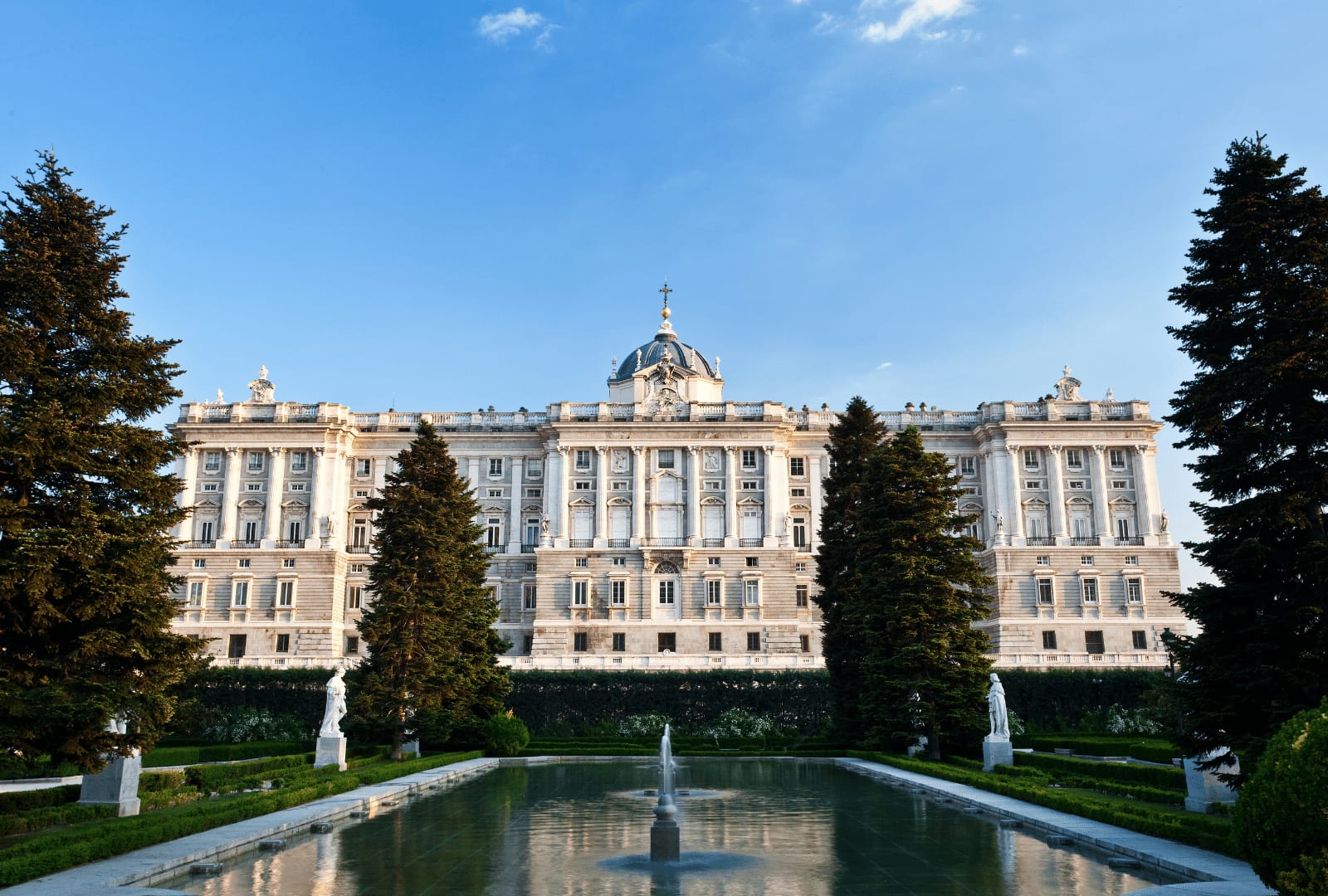
From the beginning of the 18th century, the Bourbons succeeded the Habsburgs in the government of Spain. Their first monarch, Philip V, was French by birth and married the Italian Isabella de Farnese. Both were foreign to the Hispanic taste of the time, so the Spanish Baroque was interrupted in its development by introducing new purifying and renovating airs from Europe.
Isabel de Farnesio tried to give the Spanish constructions the architectural spirit prevailing in her country. It was logical that the works sponsored by the Bourbons were carried out by Italian architects and that many Italian and French sculptors and painters worked at their service to decorate their residences. This means that the Bourbon taste is based on ordered and clear layouts, opposing the decorative taste of the national architecture, which prefers overloading and confusion.
These tendencies were significant in reflecting a monarchy, while people in the 18th century started having different architectural tastes. We can see this type of architecture in the Royal Palace of La Granja de San Ildefonso in Segovia, the first great construction undertaken by the Bourbon dynasty. It was constructed because Philip V wanted a place to go in the summer and escape Madrid —literally.
Neoclassical Architecture

The neoclassical Style was introduced in Spain after the arrival of the Bourbons at the beginning of the 18th century. When the dynastic change occurred, the Baroque was solidly established in the country. From then on, it entered a less ornate and more austere phase that would be the precursor of the neoclassical movement that began in the middle of the century.
The Bourbons wanted to achieve their initial goal of making Madrid a beautiful city with great civil works and avenues. It was only during the rise to the throne of Charles III in 1728 that the ambitious reform project was carried out. At this moment, the capital broke with the previous baroque standards and began an era marked by the neoclassical Style that lasted until the 19th century.
The most essential characteristics of neoclassical architecture are:
- Having a concept of beauty is based on the purity of architectural lines, symmetry, and proportions subject to the laws of measurement and mathematics.
In implementing this Style, they react against the decorative effects of baroque and rococo.
- Taste for simplicity, with a predominance of architecture over decoration.
- It has elements of classical architecture: columns, Doric and Ionic orders, pediments, vaults, and domes…
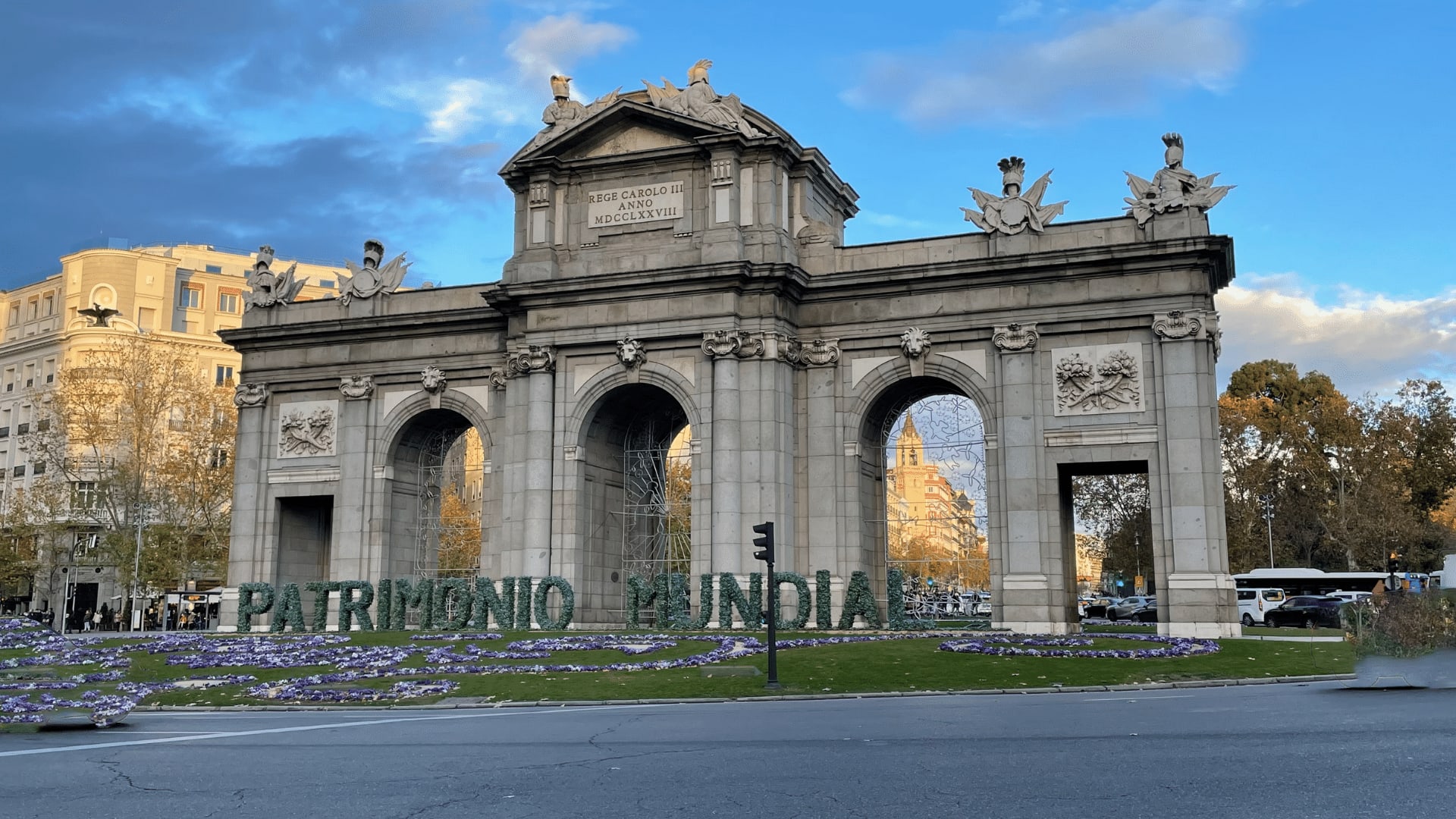
One of the most influential persons during this time was Francesco Sabatini, the principal architect of the late baroque and precursor of the neoclassical Style, whose works left an important mark on the architecture of Madrid.
The best example was the Puerta de Alcalá in 1778, which had a monumental appearance similar to the Roman Triumphal Arches.
Architecture in the 19th century
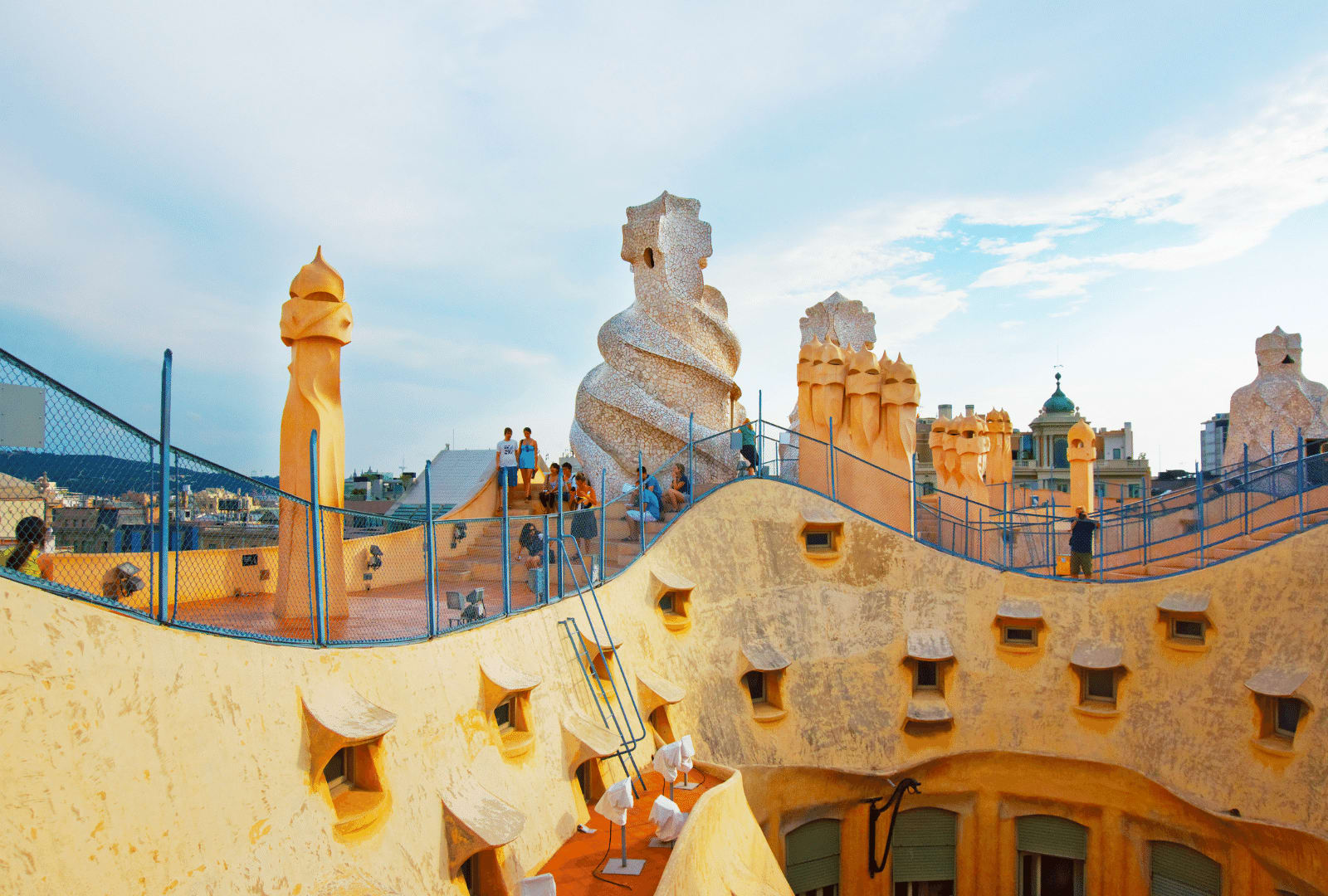
The 19th century was a time of massive societal changes, which consequently led to significant architectural changes. It developed the curious phenomenon of historicism, consisting of recovering architectural principles from other periods. Among the neo-Arabic, neo-Baroque or neo-Byzantine currents, the British neo-Gothic, based on the revival or resurrection of the aesthetic principles of Gothic, was particularly noteworthy. During the 19th century, iron and glass construction techniques were developed, which laid the foundations of modern architecture and shared the limelight with the different currents of historicist architecture.
The maximum representative of Catalan modernism in Barcelona is Antoni Gaudí, the best Spanish architect of his time:
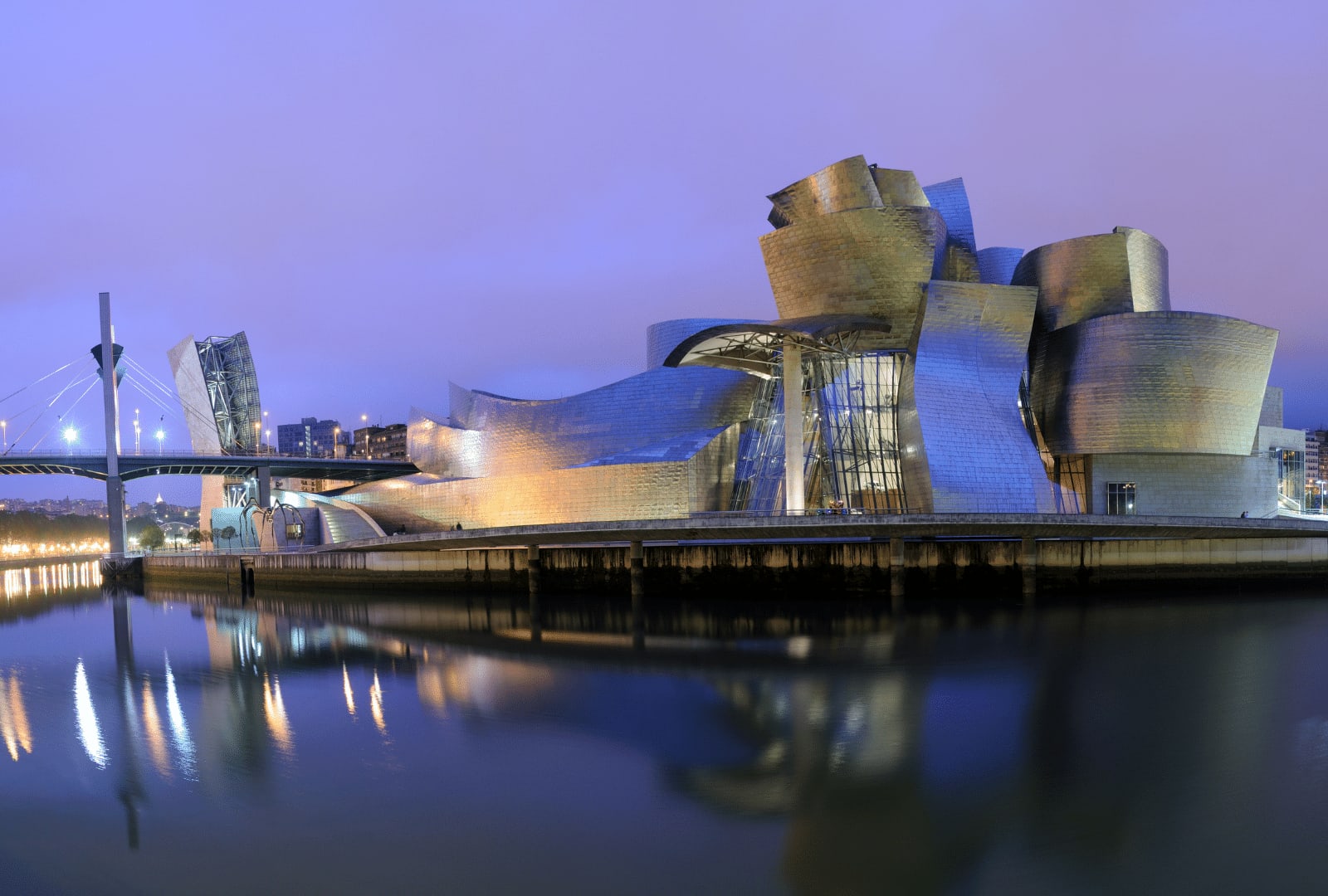
In this century, the railroad appeared as a revolutionary means of transportation, and steel was an unprecedented material in construction. The expansion of large cities and the creation of the Schools of Architecture in Madrid and Barcelona gave rise to a new trend. While urbanism also appeared by understanding the city as a unified whole. Eclecticism and new buildings were also created, such as the great train stations and exhibition centers!!
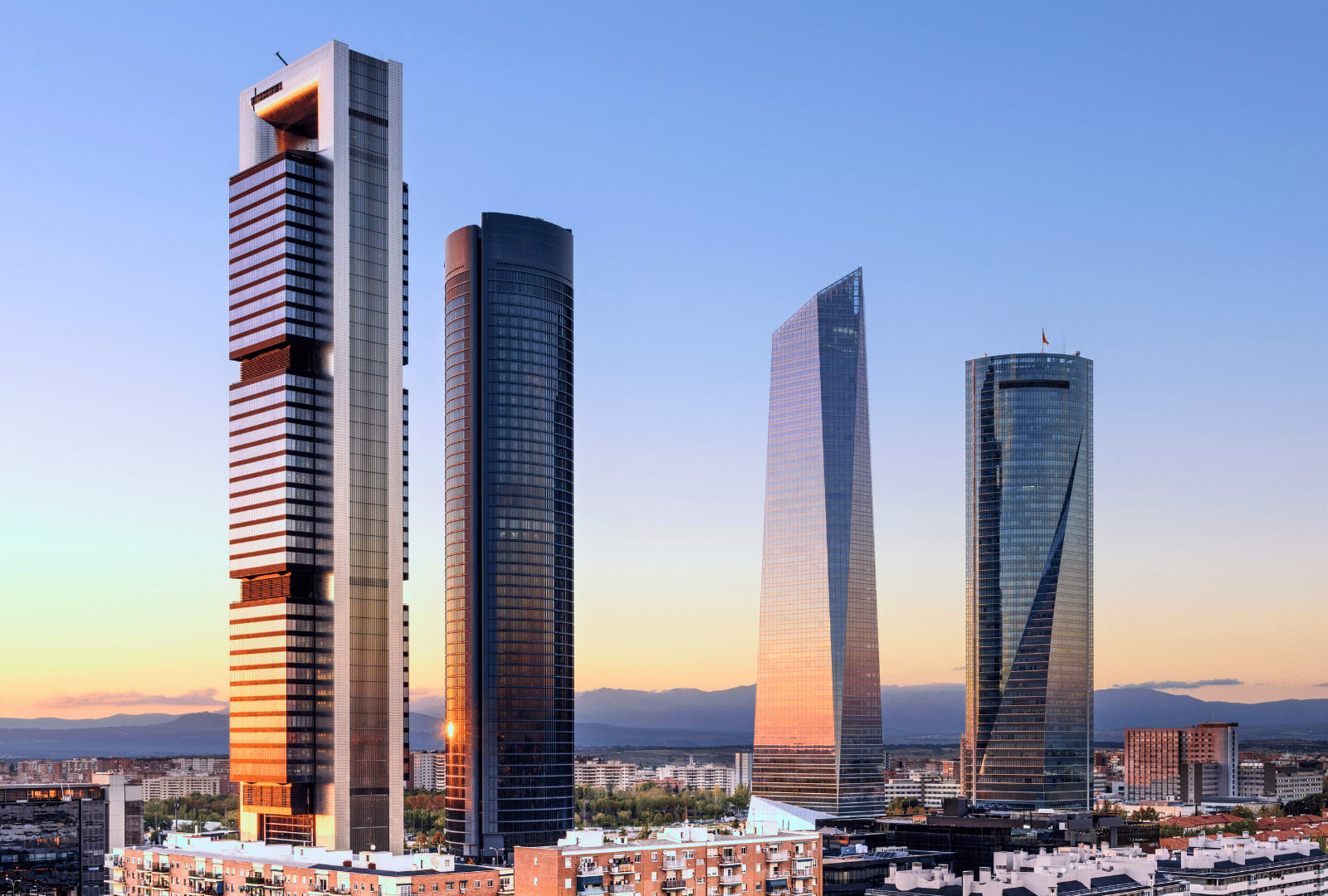
Madrid and Barcelona were able to have brilliant construction activity. Among this century’s notable buildings is the Crystal Palace of 1886, the Palace of the Congress of the Carrera de San Jerónimo, and the Liceo Theater.
As of today, we have the magnificent buildings of the four business towers (which are now 5) and are known for being the headquarters of the most important businesses in Spain. See our related post about it:
The 9 Most Successful Spanish Businesses To Consider
Are the Spanish Good Workers? Working hard or Hardly Working
As you can see, Spain is a country that historically has been occupied by many other ethnicities and cultures. This makes it rich and diverse in gastronomy, traditions, customs, architecture and way of being. Each region is a world to explore and I invite you to discover more about this peninsula that we love!
Is Spain Diverse? A Beautiful Mix of Culture and Traditions
Spanish Culture 101: Heritage, Languages, Religion, Customs & Traditions, Manners, and more



